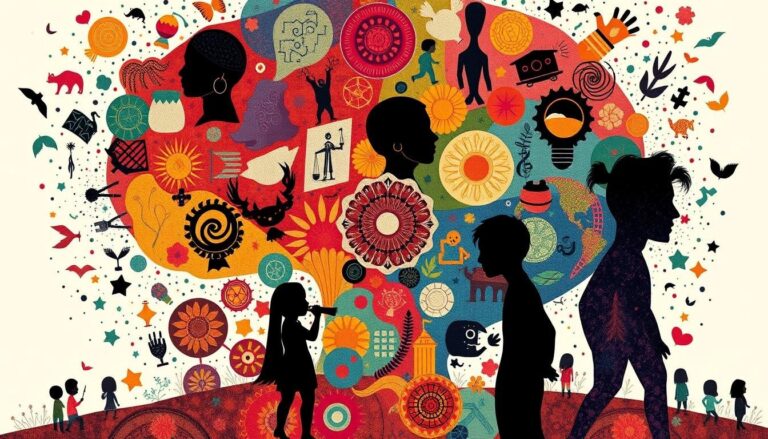Simbramento: Guide to Its Art, Culture, and Modern Relevance
Simbramento is a term that has grown in prominence across art, culture, and digital spaces, embodying creativity, boldness, and emotional depth. From classical art techniques to contemporary digital aesthetics, and from pastoral traditions to global cultural expressions, Simbramento has evolved into a multifaceted concept that resonates with artists, creators, and communities worldwide. This article explores the history, applications, and significance of Simbramento in a detailed and informative way, providing a definitive guide to understanding this unique phenomenon.
What Is Simbramento?
Simbramento is a concept that operates on multiple levels:
- Artistic Technique: In classical art, Simbramento refers to the use of shadow, muted tones, and layered compositions to create mood, tension, and emotional depth. Unlike chiaroscuro, which emphasizes contrast and form, Simbramento focuses on atmosphere and subtlety, inviting viewers to experience the emotional resonance of a scene.
- Digital Culture & Social Media: In the modern world, Simbramento has become a symbol of bold and exaggerated expression, particularly on platforms like TikTok, Instagram, Reddit, and Twitter. It features maximalist visuals, ironic humor, absurdity, and stylized self-expression, allowing users to convey identity, emotion, and humor in over-the-top ways.
- Traditional Practice: In rural Europe, Simbramento also refers to the seasonal migration of livestock, a centuries-old practice aimed at sustainable grazing, land preservation, and community cohesion.
- Therapeutic and Multidisciplinary Practice: Today, Simbramento extends to therapy, education, product design, and immersive experiences, combining emotional expression, visual storytelling, and symbolic communication.
Across all forms, the core principle of Simbramento is layered expression—whether through shadow, color, exaggeration, or symbolism.
Historical Origins of Simbramento
Classical Art and Renaissance Influence
Simbramento has roots in Southern European artistic traditions, particularly during the Renaissance and Baroque periods. Early artists like Caravaggio and Rembrandt explored shadow-heavy compositions and emotional depth, employing techniques that emphasized mood over form. These early expressions of Simbramento were about more than aesthetics—they conveyed psychological tension, moral narratives, and human emotion through visual layering.
During the Romantic era, painters such as Francisco Goya used Simbramento to communicate themes of fear, war, and existential anxiety. His muted palettes, blurred forms, and tonal darkness exemplify the emotional resonance central to the technique.
Pastoral Tradition
In Portugal and Spain, Simbramento historically referred to the seasonal migration of livestock. Farmers would move sheep, goats, or cattle between winter lowlands and summer highlands, following age-old ecological patterns. This practice had both practical and cultural significance:
- Sustainability: Rotational grazing preserved soil health and biodiversity.
- Cultural Cohesion: Seasonal migrations were communal events marked by rituals, songs, and storytelling.
- Land Management: Structured grazing prevented overuse of pastures, promoting long-term ecological balance.
This traditional form of Simbramento illustrates how human activity can harmonize with natural rhythms, a principle that resonates in modern sustainable practices.
Evolution into Modern Digital Culture
The 21st century brought Simbramento into the digital age. On social media, it emerged as a trend characterized by:
- Bold, exaggerated visuals
- Playful absurdity and irony
- Maximalist fashion, makeup, and design
- Over-the-top humor and performative authenticity
This modern adaptation draws on the layering and emotional depth of its artistic roots but applies them to online self-expression, identity, and entertainment. In essence, Simbramento became both a digital aesthetic and a cultural movement.
Core Characteristics of Simbramento
Visual and Aesthetic Features
- Muted or bold color palettes: From earthy Renaissance tones to vibrant digital neon colors.
- Layering: Gradual build-up of shadows, textures, or visuals to add depth.
- Soft transitions: Blending edges to create atmospheric effects.
- Exaggeration: Maximalist compositions in fashion, memes, or digital content.
Emotional and Symbolic Features
- Mood and atmosphere: Focuses on creating emotional resonance rather than literal clarity.
- Symbolism: Hidden meanings or narratives embedded in layered content.
- Performed authenticity: Appears unfiltered but often involves meticulous planning.
Cross-Medium Application
- Traditional painting, sculpture, and architecture
- Digital art, VR, AR, and gaming environments
- Social media content, memes, and fashion
- Therapy and STEAM education
Applications of Simbramento
In Art
Simbramento in visual arts is about emotional storytelling through light, shadow, and composition. Modern artists integrate it into digital illustration, concept art, and immersive installations, maintaining the classical focus on mood while embracing contemporary mediums.
In Digital Culture
On platforms like TikTok and Instagram:
- Content creators use exaggeration, irony, and absurdity to communicate identity.
- Memes and short videos adopt chaotic and surreal elements to entertain while making social commentary.
- Fashion and aesthetic choices reflect maximalism, bold colors, and ironic self-expression.
In Therapy and Education
- Therapeutic expression: Simbramento allows individuals to process emotions visually, providing catharsis.
- STEAM education: Teachers use it to engage creativity, cognitive skills, and interdisciplinary thinking.
- Cultural awareness: Students learn symbolism and emotional literacy through layered artistic techniques.
In Sustainable Practices
- Revived traditional pastoral Simbramento promotes land preservation and biodiversity.
- Modern environmental initiatives combine heritage knowledge with eco-tourism and education, offering both ecological and economic benefits.
In Global Cultural Practices
Simbramento manifests differently worldwide:
- Japan: Wabi-sabi aesthetics and tea ceremonies
- Brazil: Carnival costumes and dance
- India: Kathak classical dance
- Indigenous North America: Symbolic visual rituals
- Europe: Street murals, Gothic cathedrals, and urban art
Benefits of Embracing Simbramento
- Creative Growth: Encourages originality and experimentation.
- Emotional Processing: Facilitates expression and healing.
- Authenticity: Promotes self-expression in a curated, perfectionist world.
- Cultural Preservation: Maintains traditional practices and artistic heritage.
- Engagement Across Mediums: Adaptable to digital, physical, and therapeutic domains.
Challenges and Criticisms
- Accessibility: The chaotic aesthetic can be overwhelming.
- Perception: Sometimes viewed as unserious or superficial.
- Ethical concerns: Risk of cultural appropriation in symbolic use.
- Professional guidance: Misuse in therapy can lead to misinterpretation.
- Balance: Requires careful structuring to avoid randomness or incoherence.
Despite these challenges, Simbramento continues to inspire dialogue and innovation across disciplines.
The Future of Simbramento
Simbramento is evolving alongside technology and culture:
- Emotional AI: Interfaces adapting visuals to user emotions.
- Immersive experiences: VR, AR, and interactive installations using layered meaning.
- Biotech & quantum design: Creating dynamic, responsive materials.
- Education: Integrated into holistic, interdisciplinary curricula.
- Digital-physical fusion: Influencing gaming, product design, and architecture.
Its versatility ensures that Simbramento remains relevant and transformative, bridging past and future, art and technology.
How to Practice Simbramento
- Visual Boldness: Use bright colors, textures, and layered designs.
- Playful Experimentation: Be ironic, humorous, and expressive.
- Embrace Emotional Depth: Incorporate shadow, symbolism, and layered meaning.
- Medium Flexibility: Apply principles in art, fashion, social media, journaling, or interior design.
- Authentic Chaos: Allow intentional disorder to communicate personality and emotion.
Notable Practitioners
- Leonardo Vernetti: Kinetic light-responsive installations.
- Sofia Chang: Graffiti and murals blending symbolism with urban art.
- Dr. Emil Kovac: Neuro-architecture promoting healing through space and light.
- Nova Collective: Augmented reality environments with layered meaning.
- Social Media Creators: Viral content featuring absurd humor and bold expression.
Conclusion
Simbramento is more than a technique—it is a philosophy of layered expression, emotional depth, and bold creativity. It bridges centuries of art, centuries-old pastoral practices, modern digital aesthetics, and therapeutic applications. From the muted shadows of Renaissance paintings to the vibrant chaos of TikTok videos, Simbramento allows individuals to express identity, emotion, and creativity in ways that are profound, authentic, and meaningful.
By embracing Simbramento, we celebrate imperfection, contradiction, and individuality, empowering creativity while honoring tradition. Its influence will only continue to grow, shaping art, culture, and digital expression for generations to come.
FAQs About Simbramento
Q1: What is Simbramento?
A creative and cultural concept that combines artistic expression, digital trends, emotional depth, and traditional practices.
Q2: Where did Simbramento originate?
It has roots in Renaissance European art, traditional pastoral practices in Portugal and Spain, and has evolved into modern digital culture.
Q3: How is Simbramento used today?
It appears in art, social media, fashion, therapy, education, and immersive digital experiences.
Q4: Can anyone practice Simbramento?
Yes! It’s about bold, layered, and authentic self-expression, accessible across art, journaling, social media, and lifestyle.
Q5: Why is Simbramento significant?
It enhances creativity, emotional expression, cultural preservation, and personal authenticity in a world dominated by perfection and uniformity.






